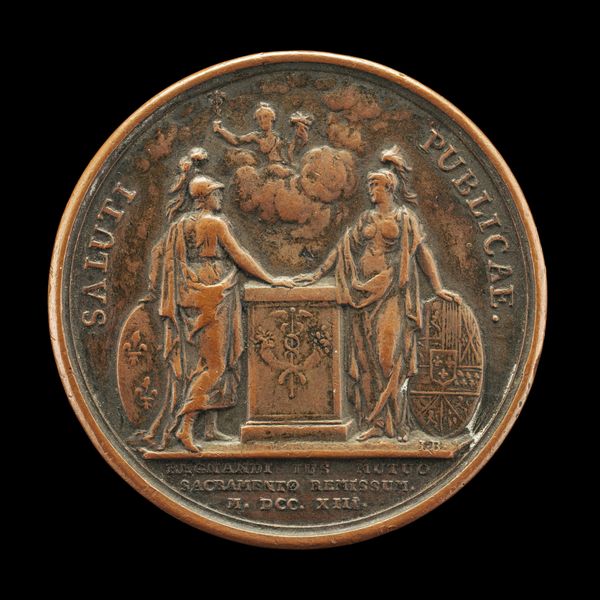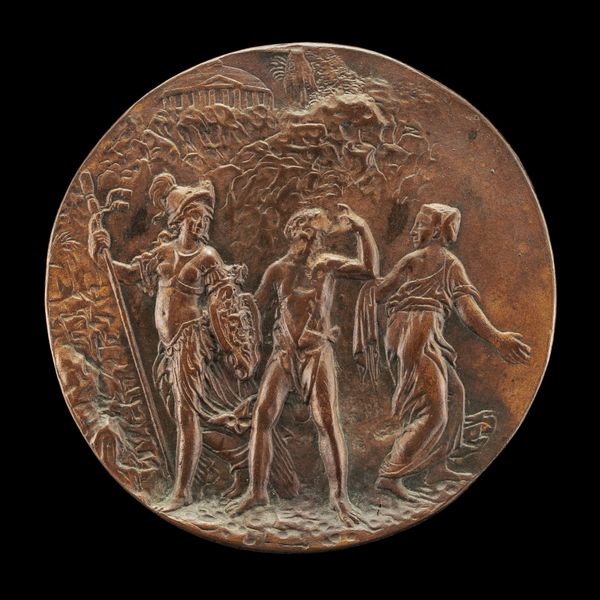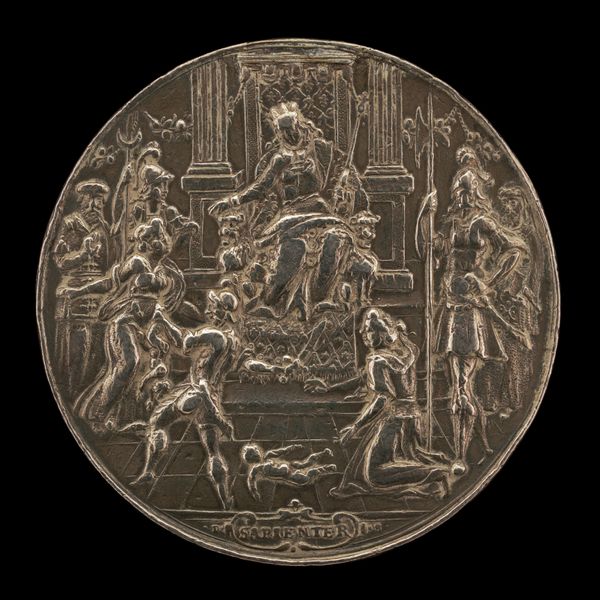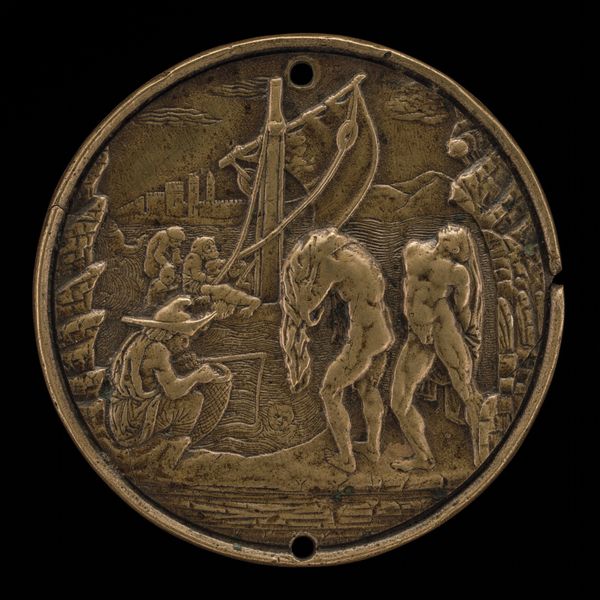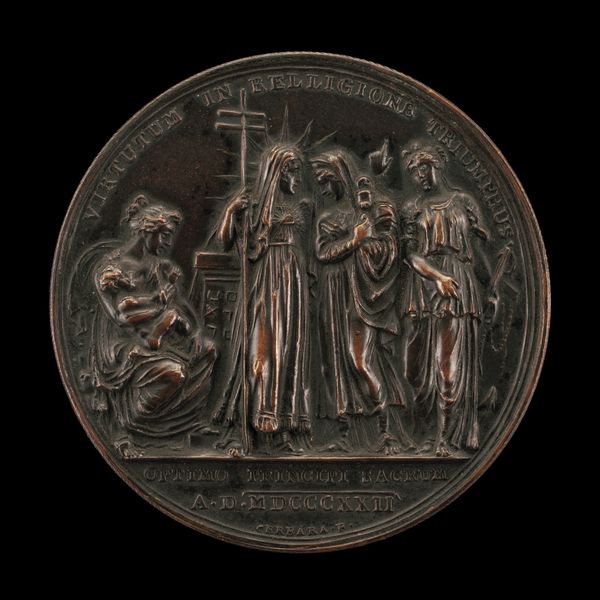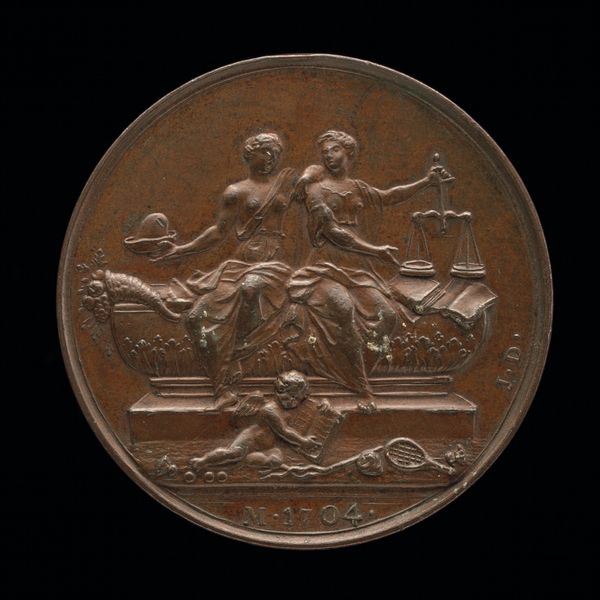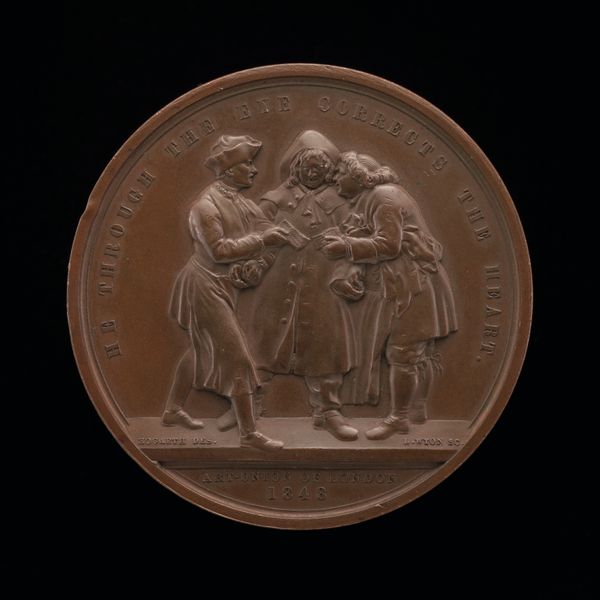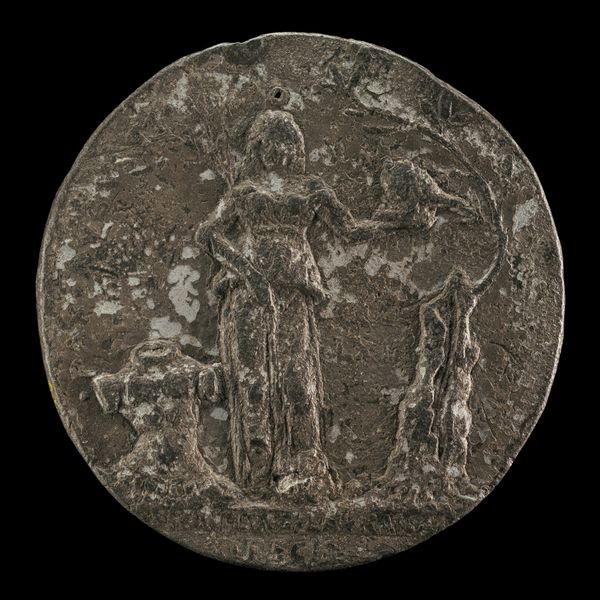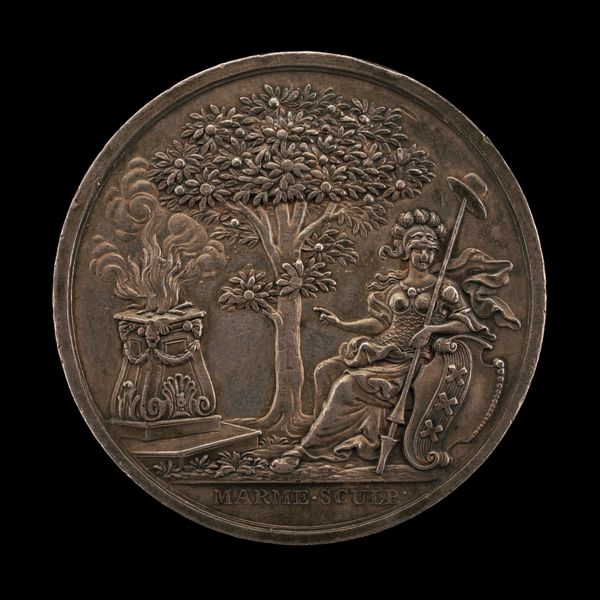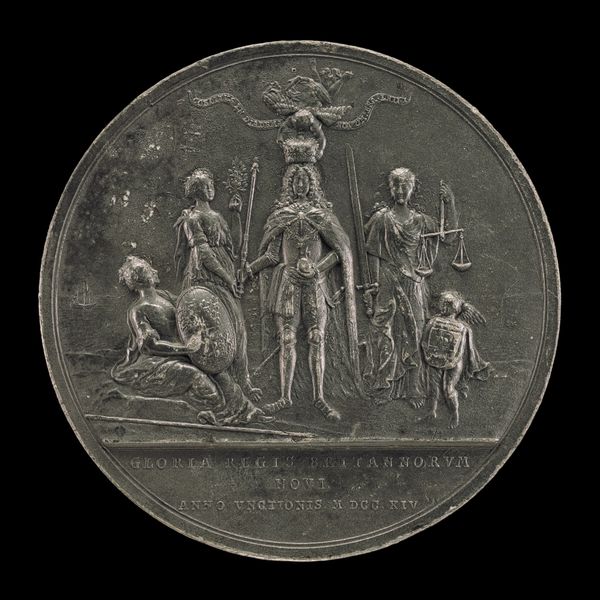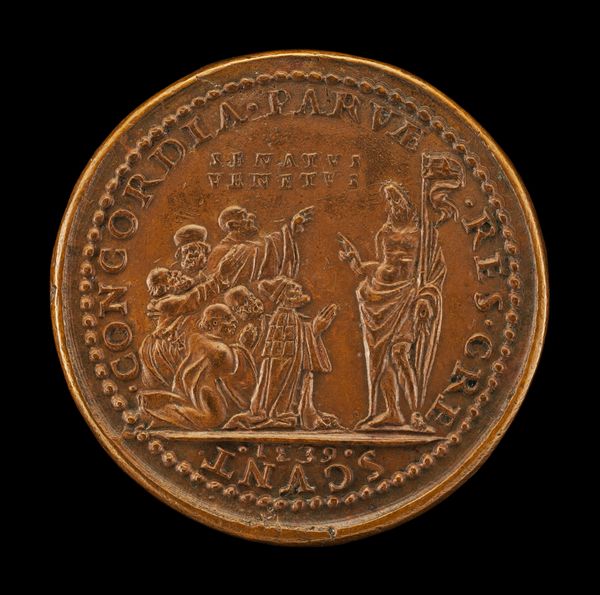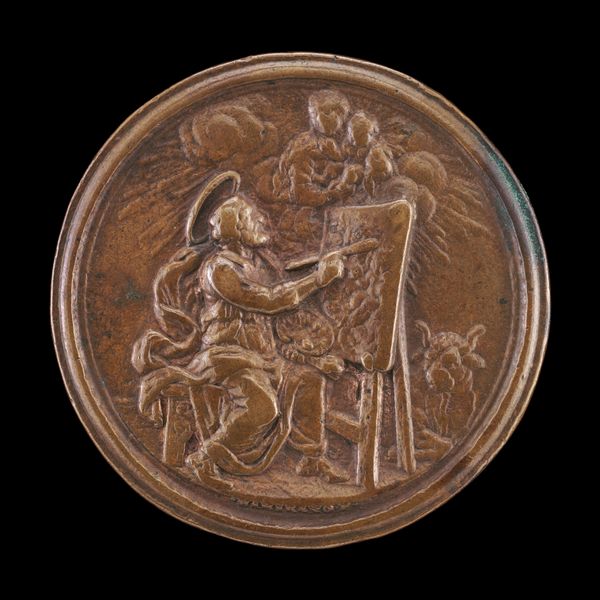![Recognition of the Independence of the United States by Friesland [obverse] by B.C.V. Calker](/_next/image?url=https%3A%2F%2Fd2w8kbdekdi1gv.cloudfront.net%2FeyJidWNrZXQiOiAiYXJ0ZXJhLWltYWdlcy1idWNrZXQiLCAia2V5IjogImFydHdvcmtzLzc5OGY5YTBkLWQ0N2EtNGJmOC05YWY3LTA1MjQ3MDQzYTgzMC83OThmOWEwZC1kNDdhLTRiZjgtOWFmNy0wNTI0NzA0M2E4MzBfZnVsbC5qcGciLCAiZWRpdHMiOiB7InJlc2l6ZSI6IHsid2lkdGgiOiAxOTIwLCAiaGVpZ2h0IjogMTkyMCwgImZpdCI6ICJpbnNpZGUifX19&w=3840&q=75)
Recognition of the Independence of the United States by Friesland [obverse] 1782
0:00
0:00
silver, print, sculpture
#
portrait
#
neoclacissism
#
silver
#
allegory
# print
#
sculpture
#
figuration
#
sculpture
#
history-painting
Dimensions: overall (diameter): 4.39 cm (1 3/4 in.) gross weight: 23.28 gr (0.051 lb.) axis: 12:00
Copyright: National Gallery of Art: CC0 1.0
This silver medal, by B.C.V. Calker, commemorates Friesland’s recognition of the United States. The making of such a medal was no small undertaking. The design would be engraved into steel dies by a highly skilled hand. These dies, in turn, would be used to strike the medal in a press, with considerable force. The crispness of the relief and the sheen of the metal speak to these processes. But the medal's material also raises questions. Silver was a valuable commodity, closely tied to global trade networks and colonial exploitation. By investing in the production of this commemorative object, the Dutch were literally minting their support for the new nation. Consider this medal as more than just a symbolic gesture. It’s a material artifact, embodying the complex intersections of politics, economics, and artistic production in the 18th century. By looking closely at the materials and methods used to create this work, we can better understand its full historical significance, and how it reflects Friesland’s acknowledgement of the independence of the United States.
Comments
No comments
Be the first to comment and join the conversation on the ultimate creative platform.
